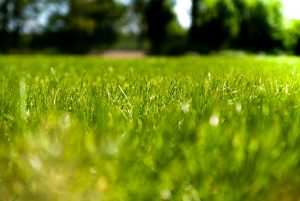What Are the Effective Behavioral Intervention Techniques for Kids with ADHD?
Attention-deficit/hyperactivity disorder (ADHD) is a neurodevelopmental disorder that affects a child’s ability to focus, control impulses, and regulate behavior. Kids with ADHD often struggle in school, have difficulty maintaining relationships, and may exhibit impulsive or hyperactive behaviors. ADHD is caused by a combination of genetic, environmental, and neurological factors. Recognizing the symptoms of ADHD early on is crucial for parents, teachers, and healthcare providers to provide appropriate support and interventions.
Understanding ADHD in Kids
Children with ADHD may display a variety of symptoms, including inattention, hyperactivity, and impulsivity, which can manifest in different ways depending on the child. For instance, one child might be unable to sit still in a classroom setting, while another might have trouble completing homework due to distractibility. It’s essential to understand that ADHD symptoms can vary widely, and a one-size-fits-all approach is rarely effective.
Behavioral Intervention Techniques
Behavioral interventions for kids with ADHD focus on teaching them strategies to manage their symptoms and improve their behavior. These techniques are designed to help children develop skills such as organization, time management, and impulse control. Examples of behavioral interventions include behavior charts, token economies, and social skills training. It’s crucial to tailor the intervention techniques to the individual needs of each child with ADHD to maximize effectiveness.
Behavior Charts and Token Economies
Behavior charts are visual tools that help children track their progress in achieving specific behavioral goals. For example, a chart might list daily tasks such as “complete homework” or “maintain personal space,” with stickers or stars awarded for each task completed. This visual representation can motivate children by providing a sense of accomplishment.
Token economies are a similar concept, where children earn tokens for positive behaviors, which they can later exchange for a reward. This method encourages consistent behavior by linking immediate actions to long-term goals. For instance, a child might earn a token for every 15-minute increment of focused study time, which can later be exchanged for extra playtime.
Social Skills Training
Many children with ADHD struggle with social interactions, often due to impulsive behavior or difficulty reading social cues. Social skills training involves structured activities where children practice appropriate social behaviors, such as taking turns, listening, or sharing. Role-playing different scenarios can help children develop empathy and improve their interactions with peers.
Parent Training
Parent training programs can be an effective behavioral intervention for kids with ADHD. These programs teach parents how to set clear expectations, establish consistent routines, and provide positive reinforcement for desired behaviors. Parent training also helps parents learn effective communication strategies and problem-solving skills to support their child with ADHD at home and in various settings. Involving parents in the intervention process can lead to better outcomes for children with ADHD.
Establishing Routines
Establishing a consistent daily routine can provide children with ADHD a sense of structure and predictability, which can help reduce anxiety and improve behavior. For instance, a morning routine might include specific times for waking up, eating breakfast, and getting dressed, followed by a visual schedule for the day. Consistency in routines helps children know what to expect, reducing uncertainty and stress.
Effective Communication Strategies
Learning how to communicate effectively with a child who has ADHD is vital. This includes using clear and concise instructions, as children with ADHD may struggle with lengthy or complex directions. Additionally, maintaining eye contact and getting down to the child’s level can help ensure they are engaged and understand the message being conveyed.
Behavioral Therapy
Behavioral therapy, such as cognitive-behavioral therapy (CBT) or behavior modification, can help kids with ADHD learn to identify and change negative thought patterns and behaviors. This type of therapy can also help children develop coping strategies and improve self-regulation. Behavioral therapy sessions may involve setting goals, practicing new behaviors, and learning relaxation techniques to manage stress and anxiety. It is essential for therapists to establish a positive and supportive relationship with the child to promote successful outcomes.
Cognitive-Behavioral Therapy (CBT)
CBT focuses on helping children understand the connection between their thoughts, feelings, and behaviors. For example, a child who becomes angry when they make a mistake in their homework might be guided to reframe their thinking to see mistakes as a learning opportunity. By changing thought patterns, children can develop healthier responses to challenging situations.
Relaxation Techniques
Teaching children relaxation techniques can be particularly beneficial for managing ADHD symptoms. Techniques such as deep breathing, progressive muscle relaxation, or guided imagery can help children calm themselves during moments of stress or hyperactivity. Practicing these techniques regularly can enhance self-regulation and reduce impulsivity.
Classroom Interventions
Classroom interventions, such as implementing a structured schedule, providing clear expectations, and offering frequent breaks, can help kids with ADHD succeed academically. Teachers can also use rewards systems and positive reinforcement to encourage positive behavior. Special accommodations, such as preferential seating or use of fidget tools, can create a more supportive learning environment for children with ADHD. Collaborating with teachers and school staff is vital in implementing effective classroom interventions.
Structured Schedules and Breaks
A structured classroom schedule with clearly defined tasks and frequent breaks can help children with ADHD maintain focus and reduce restlessness. Short, scheduled breaks that allow for physical activity or relaxation can help reset their attention and minimize disruptions.
Accommodations and Tools
Providing accommodations such as preferential seating near the teacher or allowing the use of fidget tools can significantly impact a child’s ability to focus and engage in the classroom. These tools and accommodations should be personalized to the child’s specific needs and regularly reviewed for effectiveness.
Physical Exercise and Nutrition
Regular physical exercise and a healthy diet can play a significant role in managing ADHD symptoms in children. Exercise can help reduce hyperactivity and impulsivity, while a balanced diet rich in nutrients can support brain function and improve focus. Engaging in activities like sports, yoga, or outdoor play can help children with ADHD release excess energy and improve their mood and concentration. Educating parents and caregivers about the importance of a nutritious diet and regular exercise is key in supporting children with ADHD.
Benefits of Physical Exercise
Physical activity is a natural outlet for children with ADHD to expend energy and improve concentration. Activities such as swimming, martial arts, or team sports can be particularly beneficial as they combine physical exertion with discipline and focus. Regular exercise has been shown to increase dopamine levels in the brain, which can help improve attention and reduce impulsivity.
The Role of Nutrition
A balanced diet that includes adequate protein, healthy fats, and complex carbohydrates can positively impact a child’s behavior and concentration. Some parents find that eliminating certain food additives or reducing sugar intake can lessen hyperactive symptoms, although results can vary. Consulting with a nutritionist can help create a diet plan that supports the child’s specific needs.
Collaboration with Healthcare Providers
Collaboration with healthcare providers, such as pediatricians, psychologists, and behavioral therapists, is essential in developing an effective treatment plan for kids with ADHD. These professionals can provide guidance, monitor progress, and make adjustments to the intervention strategies as needed. A multidisciplinary approach involving healthcare providers, educators, and parents ensures a holistic and personalized treatment approach for children with ADHD. Regular communication and coordination among the team members are crucial for the success of the intervention plan.
Regular Monitoring and Adjustments
Regular check-ins with healthcare providers can help ensure that the intervention plan remains effective. Adjustments may be necessary as the child grows and their needs change. For instance, a child who initially benefits from a particular behavioral strategy may require a different approach as they develop new skills or face new challenges.
The Importance of a Multidisciplinary Team
A comprehensive treatment plan for ADHD often involves a team of professionals working together. For example, a psychologist might focus on behavioral interventions, while a pediatrician monitors any medication use, and a teacher implements classroom strategies. This collaborative approach helps create a cohesive support system that addresses all aspects of the child’s life.
By using a combination of behavioral intervention techniques, parents, teachers, and healthcare providers can help kids with ADHD manage their symptoms, improve their behavior, and succeed academically and socially. With the right support and strategies in place, children with ADHD can thrive and reach their full potential. Approaching ADHD treatment holistically, addressing cognitive, emotional, and behavioral aspects, supports the overall well-being of the child. Continued research and collaboration among stakeholders are vital in advancing interventions and support for children with ADHD.



